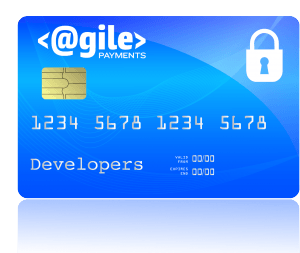
Traditionally Payment Gateway Integrations thinking goes something like this:
- Integrate with usual suspects in gateway space
- Inform end-user customers about gateway options
- Hand off the customer and the assume or hope for the best
A 2025 Guide
Payment Gateway Integrations FAQ’s
A Payment Gateway Integration API offers a SaaS platform the ability to securely connect to an ACH payment or credit card payment disbursement solution. The Payment Gateway serves as the secure conduit to move sensitive credit card or bank account from the application user to the back end payment processor or acquirer.
For many developers and SAAS platforms choosing their payment gateway integration partner[s] is not a decision driven by the potential for the partner to actually help grow their business.

Support and funding issues, data hostaging [more info below], customer confusion on what a payment gateway is versus merchant account, lack of payment options [specifically ACH Processing for recurring payments] and more can leave clients frustrated and looking for alternatives. Coupled with significant issues reducing credit card decline rates your hard won clients may end up frustrated and exploring alternatives to your solution.
In the ACH world there is no “autorization” that lets you know at the POS that a payment will be successful. In the vast majority of cases it will be but there is a multi-day waiting period for confirmation.
This can often lead to accounting reconciliation issues where the platform payment reporting and the customer’s bank statements don’t match.
Having sophisticated Payment Deposit Reconciliation tools allows you to reconcile payments deposits directly in your payment reporting suite. The vast majority of ACH API providers DO NOT offer this level of reporting insight.
A Payment Integration Partner can help the the platform and it’s developers to maximize payment adoption and reduce time to market by providing advice and understanding the SaaS platform’s client base.
The decision to explore payment processing integration has typically been motivated by a fairly small number of factors and is not typically a strategic decision. Some common reasons:
Handing off your most valuable asset [your client base] to a gateway and hoping for the best has been the way most software and SAAS providers have gone about handling their payment gateway integration needs. Payment processing integration must be thoughtful and designed with your end user paramount.
There are options and if implemented strategically can help grow your client base and revenues. How?
You should also examine recurring payment exception handling as reducing decline rates in billing can also be a significant revenue lift plus a reduction in time spent on rebilling. Merchants in the recurring/subscription billing model often see credit card decline rates close to 10%. If your gateway partner can offer strategic handling and representment of these transactions and significantly reduce decline rates you again have a competitive advantage. As an example let’s say a merchant bills 1000 customers $49 per month and your offering reduces declines from 10% to 7%. You have produced a $1500/month revenue lift and cut in half time [=money] spent rebilling-now that’s ROI.
If your company was able to bump revenue buy 10% via a strategic payment gateway integration partnership, grow customer base by 10% through your differentiated payment solution and another 10% by leveraging referrals from your very satisfied clients [that you help save time and money] your revenues and business valuation grow by 33%. Bump each area by 20% and you see 73% revenue increase. Get to 25% bumps and you just about double your business. Not to mention that your client retention rate significantly improves.
So give careful thought to your gateway partner. It can without question become a growth catalyst for your business.
A payment processor moves the money from a transaction from the consumer or business to the merchant or business that has the merchant account. A payment gateway provides a secure conduit for moving full credit card or ACH data to the actual processor.
Payment gateways function by:
1) The customer enters their payment data into a secure payment portal.
2) The payment gateway encrypts sensitive data and transmits that data to the payment processor. With credit card transactions this is called an “authorization”. This authorization validates the card # is good AND that the requisite funds are available on the card.
3) Once the payment gateway receives authorization, the payment can be fulfilled, transferring funds to the merchant account from the consumer/business making a purchase.
Payment gateways are the perfect tool to help manage e-commerce transactions and receive payments online. The right payment gateway seamlessly fits into your everyday business operations to support exponential growth while protecting brand reputation and revenue. The secure transmission of sensitive data as well as reconciliation information provides businesses with tools to collect and reconcile payments.
Failed online payments are an unfortunate but relatively common occurrence. People change credit cards fairly often, which makes keeping current card data difficult. There are tools to auto-update new card data as well as retry logic. Info on Credit Card Decline Mitigation here.
The three most common reasons payments fail include system downtime, payment technology errors, and compromised security. However, the transaction can also be unsuccessful because,
There are many factors to consider when determining which payment gateway is the best fit for your business. While payment gateways tend to follow the same five-step approach, they each have limitations. Investing in software that meets all your business requirements is vital.
1.) Types of cards and payment methods does it support?
2.) Does it offer ACH Payment Processing?
3.) Are there advanced security protocols, covering encryption and fraud protection?
4.) Does it integrate with your management software?